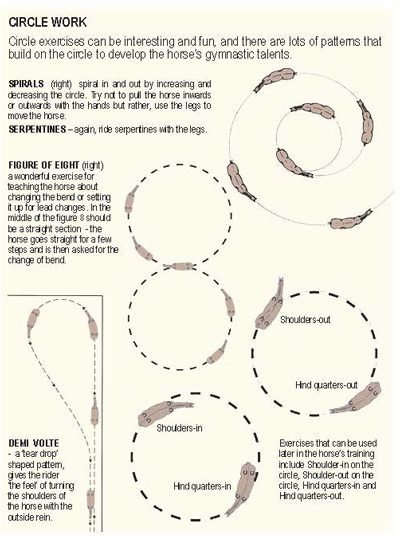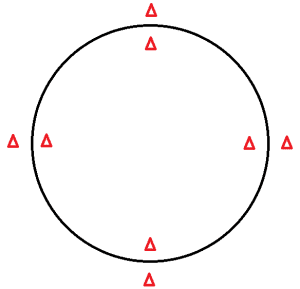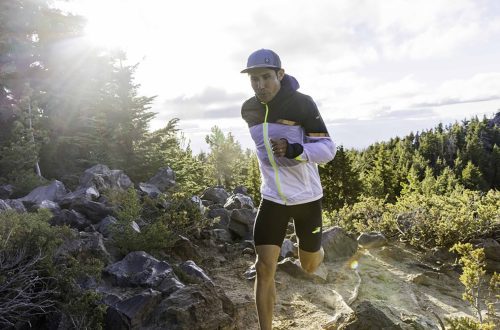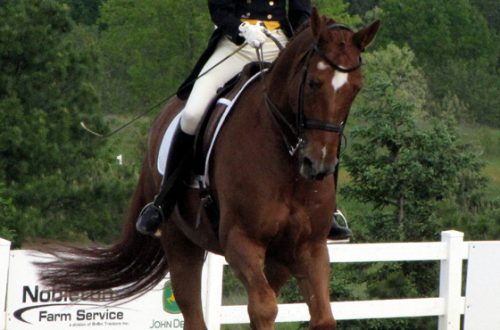
Helping the Rider: Circle Exercises
Helping the Rider: Circle Exercises
Circle routines can be fun, varied and serve a variety of rider goals.
In this article, I want to share with you exercises aimed at improving control, speed control, working out bends and perfecting the canter with the right leg.
Preparing the arena:
You will need 8 cones. Arrange them in pairs in four zones of a 20-meter circle (as in the figure):

Rider requirements:
The rider must know and be able to use:
- оmain controls (seat, legs, arms);
- basic means for changing the speed of the horse (seat, legs, arms);
- the basic concept of bending.
Purpose of the exercise:
For the rider: learn to maintain flexion and speed by moving in a circle using the legs, buttocks and reins.
For the horse: to hone the skill of maintaining trajectory, speed, bend and balance when moving in a circle. The horse must be able to retain the above “inputs” while allowing the rider to use the aids for other purposes.
The rider must ensure that the horse is comfortable and relaxed while moving in a given pattern, so that the circle can be returned to when the horse is confused and confused about something, worried.
Exercise 1
First at the walk, then at the trot:
1. Set the trajectory and speed.
We begin to move the horse in a circle.
Use the seat and legs to guide the horse along the desired path.
When the horse gets on the desired trajectory and begins to move at the speed we need, we leave it alone.
If the horse deviates from the trajectory or changes speed, we correct it by influencing the seat and legs. If necessary, we connect a reason. When the horse returns to the previous “pattern” of work, we leave it alone (we try not to keep her constantly internal occasion).
Track how long the horse can do the task on its ownbefore you need to correct it. The time between adjustments should continually increase (until you don’t need to intervene at all).
Once this happens, go to…
2. Set flexion and balance.
When the rider enters the space between the cones, he asks his horse to shift or leg yield one step outward.
This helps the horse bend inward and shift its balance outward so it doesn’t fall over the inside shoulder.
When the horse responds, soften up.
Once the horse begins to bend and maintain good balance, leave him alone.
At first, ask the horse to bend on the same pair of cones on each circle. Then it will be possible to bend it each time on a new pair or on two pairs along the center lines. As you progress in the exercise, you can begin to bend the horse on each pair of cones, but this can be too difficult for the horse or rider, so carefully evaluate your abilities.
3. We achieve relaxation.
When rider and horse learn a difficult exercise, they can return to the circle to relax and find comfort.
The horse understands that he is doing the right thing, as he receives a reward. And you offer her a relaxing, familiar exercise. The horse will know that he can relax on the circle if he is frightened or worried about something.
4. Repeat the work in the other direction.
Exercise 2 (for working out canter lifts)
Use the template above for the next exercise. It will focus on working on the canter lifts.
1. Training.
Remember how the circle is divided into 4 quarters.
Every quarter you will work on something different, but all the work is for the gallop.
2. Step 1/4 circle.
Get your horse on the right track, get the right speed, bend, and balance.
3. Trot for ¼ circle.
Bring your horse into a trot exactly between the cones to encourage him to listen to you.
4. Preparing to get into a ¼ circle canter.
Move the horse’s shoulders outward so that there is room for the inside hind leg to work. If the horse’s inside front foot goes in front of the inside hind leg, it will interfere with a good lift.
5. Rise and gallop ¼ circle.
Raise the horse into a canter exactly between the cones.
Controls: inside rein and leg open, outside rein engaged.
6. Gallop for 1 lap.
7. Go to step and repeat.
Cynthia Linsenbart (source); translation by Valeria Smirnova.





